Posts Tagged: sage
This Bully Bee Goes for the Blue Plate Special
It's a bully. But what a bully! Ever seen the male European wool carder bee (Anthidium manicatum) protecting its turf? It's "no-holds barred" on our blue spike sage (Salvia uliginosa) and frankly, it's a delight to see and photograph. The highly...
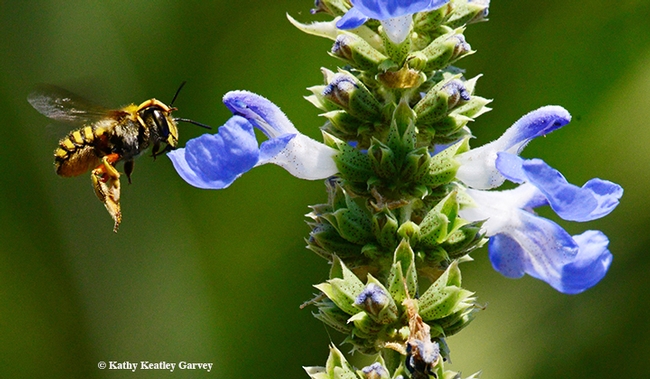
European wool carder bee, Anthidium manicatum, heads toward a blue spike sage, Salvia uliginosa. (Photo by Kathy Keatley Garvey)
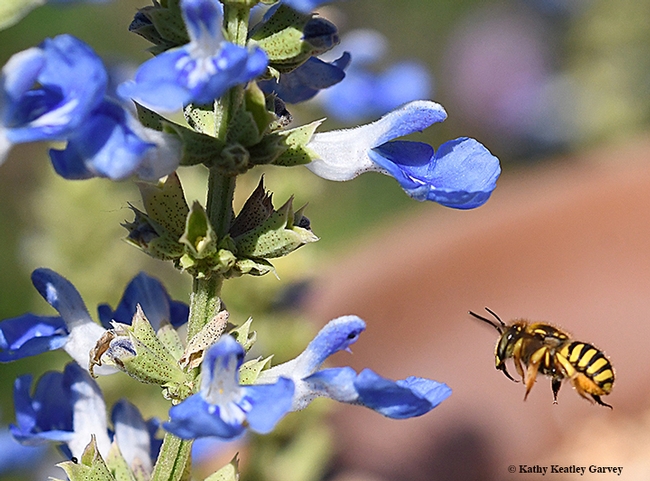
The European wool carder bee, an Old World bee, seems to prefer blue flowers with a long throat. This is blue spike sage, Salvia uliginosa, a native of Brazil. (Photo by Kathy Keatley Garvey)
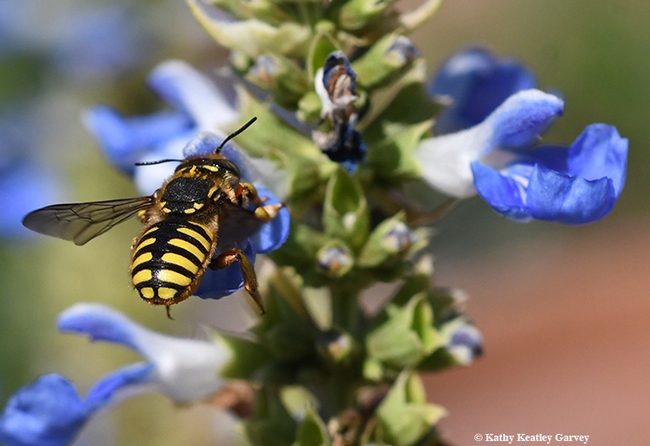
Two European wool carder bees in the process of giving the world more wool carder bees. (Photo by Kathy Keatley Garvey)
They Hop and They Suck!
You've seen them. You've seen them hop. They're aptly named. Leafhoppers are tiny insects (family Cicadellidae) that suck nutrients from plants. But have you ever looked at them really closely? We spotted scores of mottled leafhoppers last week on...
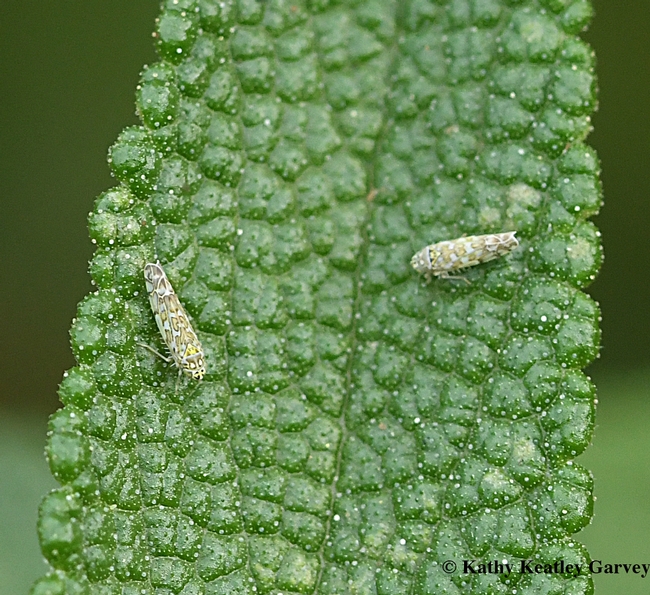
Two leafhoppers sharing a black sage leaf in Vacaville, Calif. They are Typhlocybinae leafhoppers, Eupteryx decemnotata, according to Robert Lord Zimlich of BugGuide.Net. (Photo by Kathy Keatley Garvey)
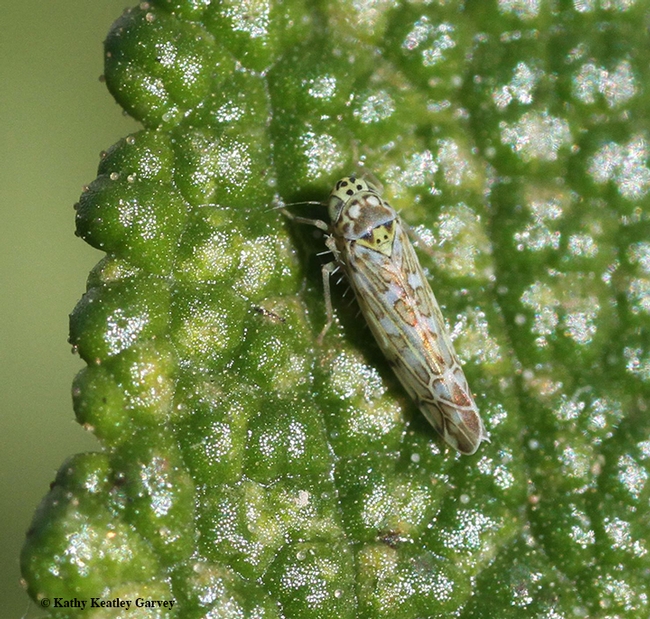
"Leafhoppers generally are varying shades of green, yellow, or brown, and often mottled," according to the UC Statewide Integrated Pest Management Program. This one is a Eupteryx decemnotata on black sage (Salvia mellifera) in Vacaville, Calif. (Photo by Kathy Keatley Garvey)
UC Davis Arboretum Plant Sale: Think Pollinators!
Think bees. Think butterflies. Think plants that will attract them. The UC Davis Arboretum and Public Garden is hosting its first in a series of fall plant sales on Saturday, Oct. 7 at the Arboretum Teaching Nursery on Garrod Drive, UC Davis...
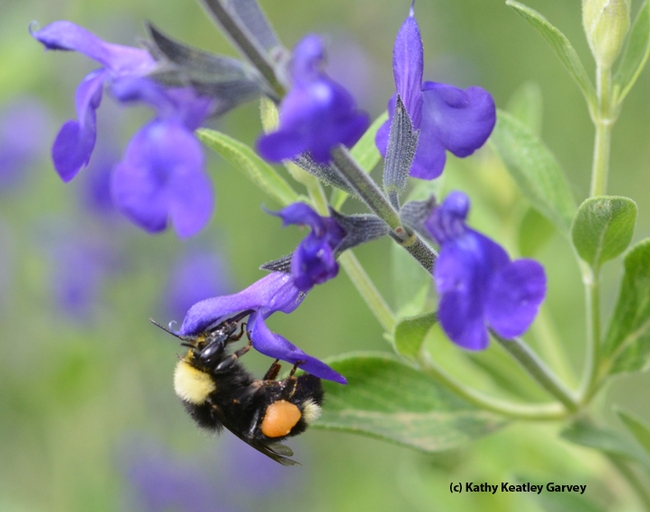
A black-faced bumble bee, Bombus californicus, forages on Purple Ginny salvia (sage). Sages are popular at the UC Davis Arboretum Plant Sales.(Photo by Kathy Keatley Garvey)
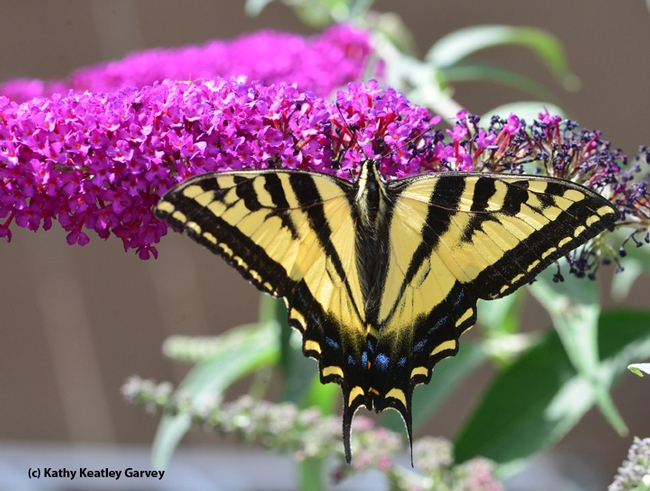
A Western tiger swallowtail, Papilio rutulus, sips nectars from a butterfly bush, Buddleia davidii. (Photo by Kathy Keatley Garvey)
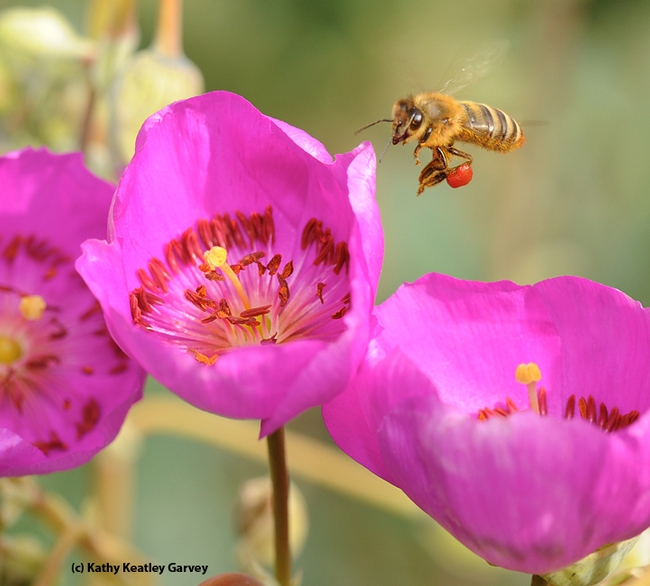
A pollen-packing honey bee heads for rock purslane, Calandrinia grandiflora. This is one of the plants available at the UC Davis Arboretum Plant Sale on Oct. 7. The plant yields red pollen. (Photo by Kathy Keatley Garvey)
How's Your Front Yard Looking?
How's your front yard looking? A little bit brown due to the drought? Thinking of replacing some of your plants with drought-tolerant ones? And hoping to attract some bees, butterflies and other wildlife? You're in luck. The UC Davis Arboretum is...
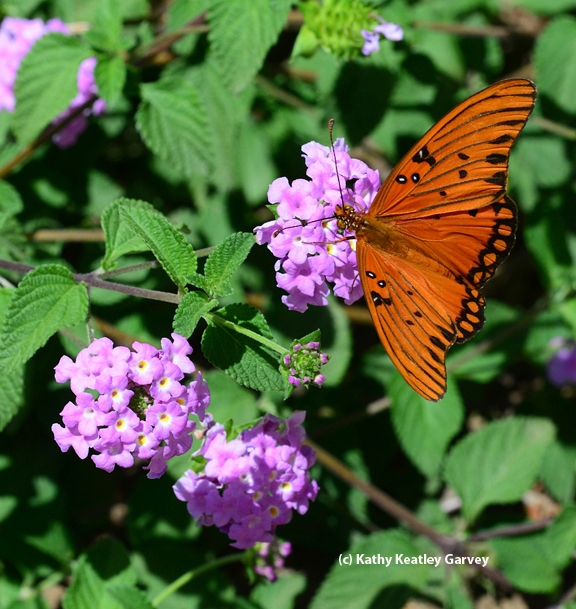
A Gulf Fritillary butterfly on purple lantana. (Photo by Kathy Keatley Garvey)
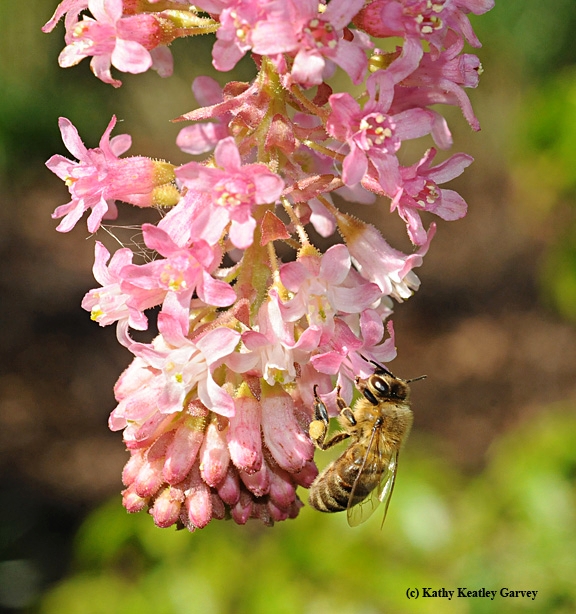
A honey bee on pink chaparral current. (Photo by Kathy Keatley Garvey)
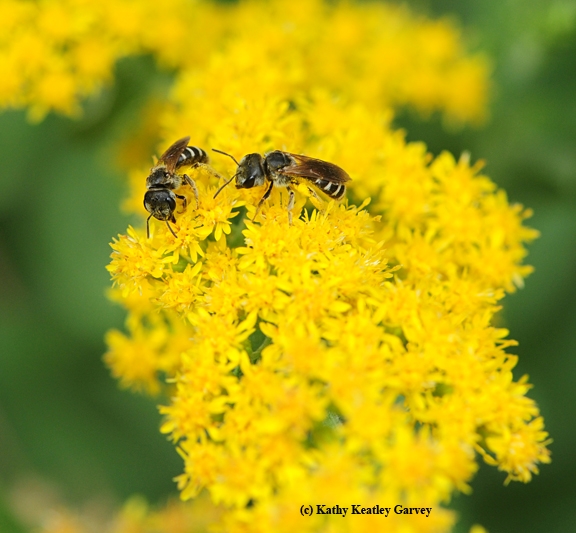
Sweat bees (Halictus ligatus) on goldenrod. (Photo by Kathy Keatley Garvey)
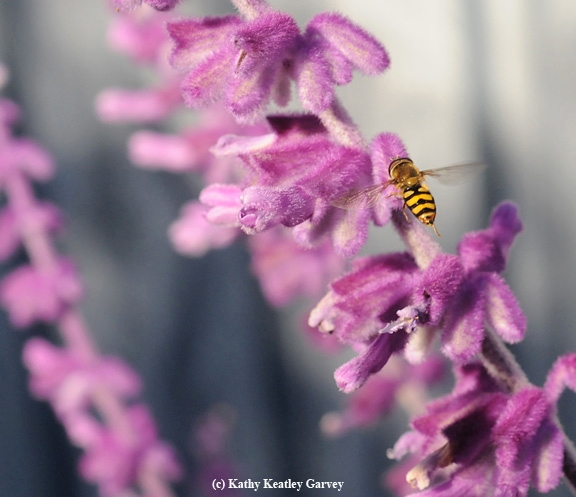
A syrphid fly, aka hover fly and flower fly, on Russian sage. (Photo by Kathy Keatley Garvey)
Behold the White-Lined Sphinx Moth
Our cat used to catch them. She'd bring them into the house and watch them flutter at our feet. The white-lined sphinx moth (Hyles lineata) flies during the day and at night. It's not a graceful flier. It bumbles along like Howard Hughes'...
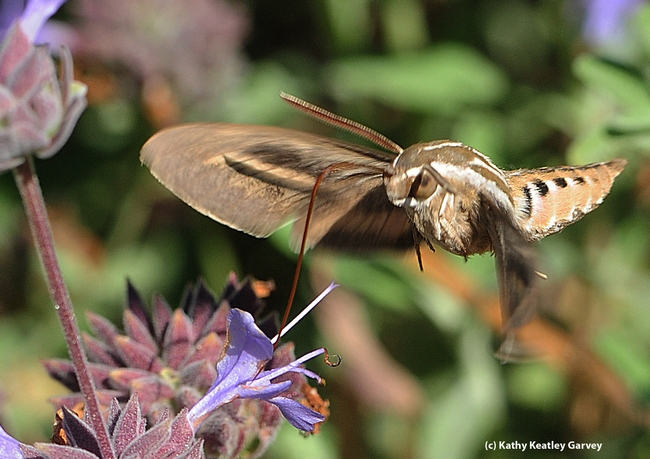
White-lined sphinx moth in flight. (Photo by Kathy Keatley Garvey)
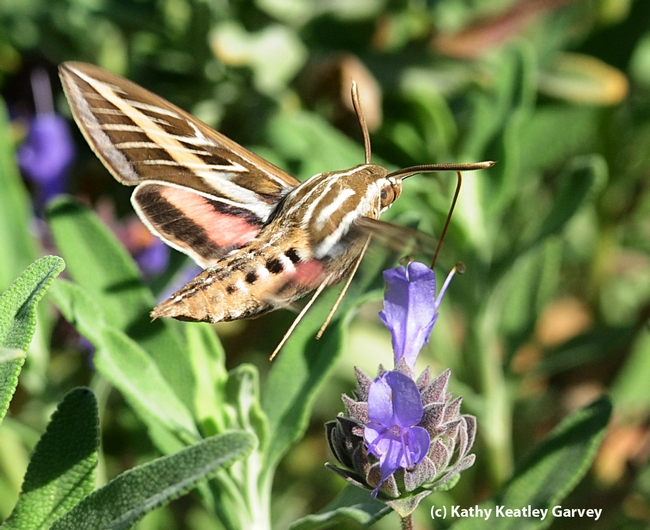
White-lined sphinx moth heads for salvia (sage). (Photo by Kathy Keatley Garvey)
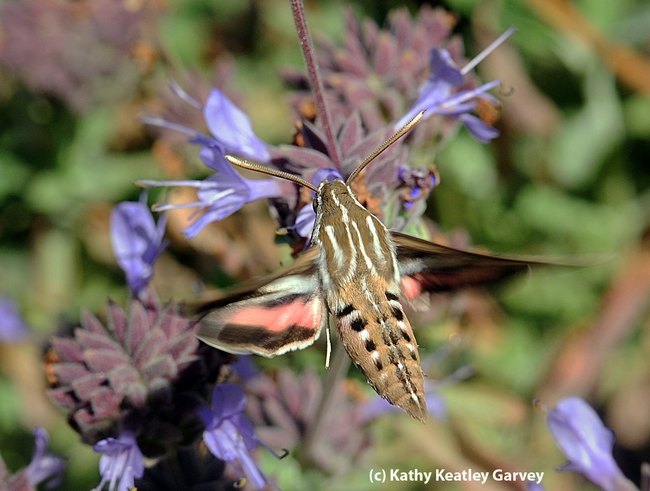
View from above of the white-lined sphinx moth. (Photo by Kathy Keatley Garvey)

